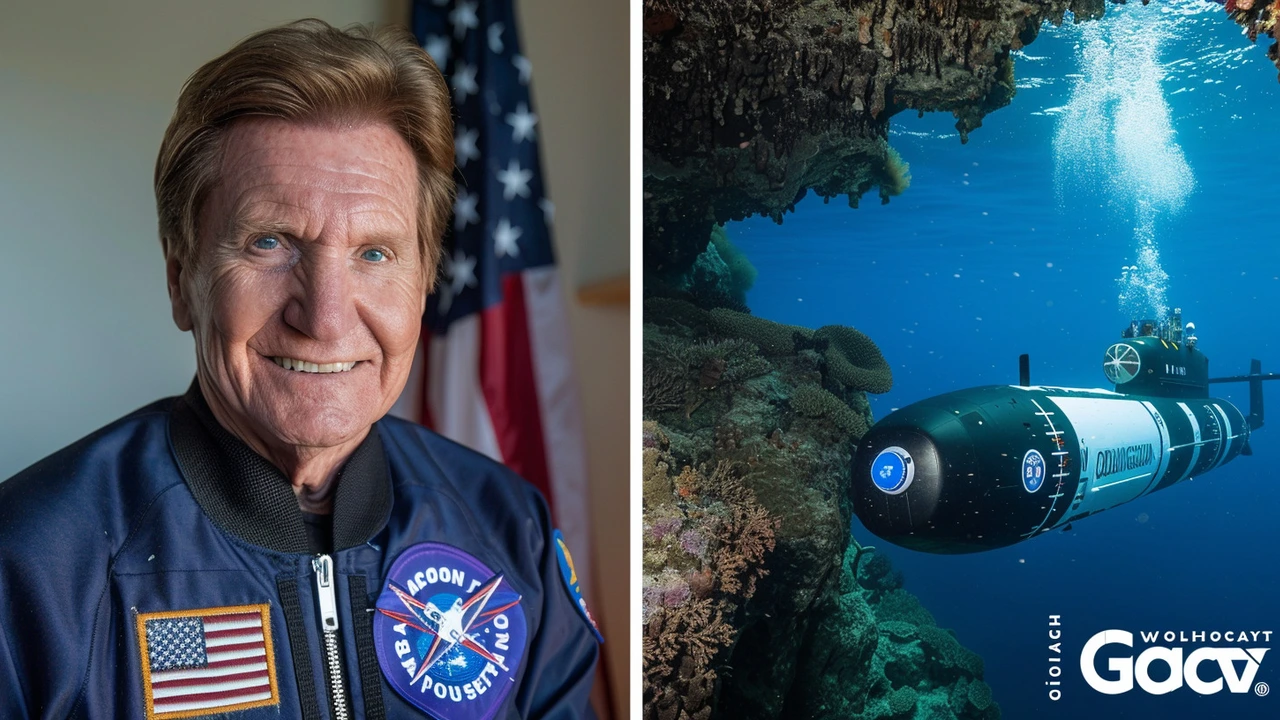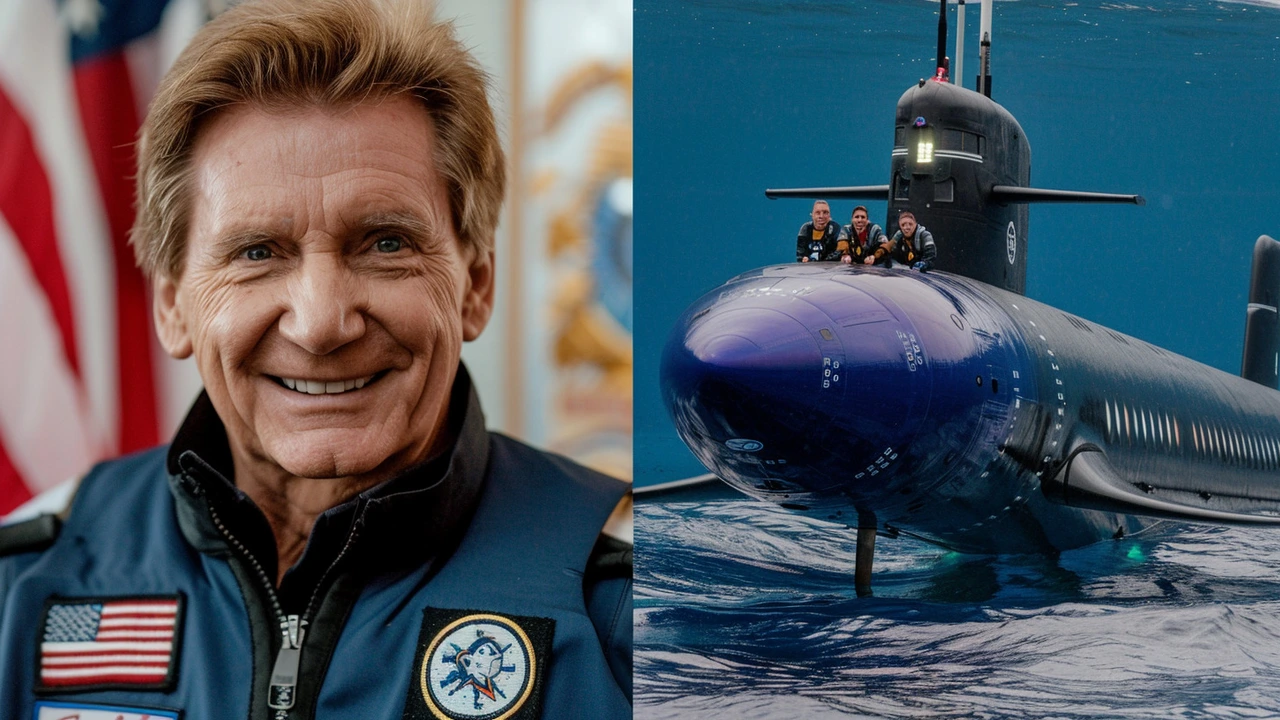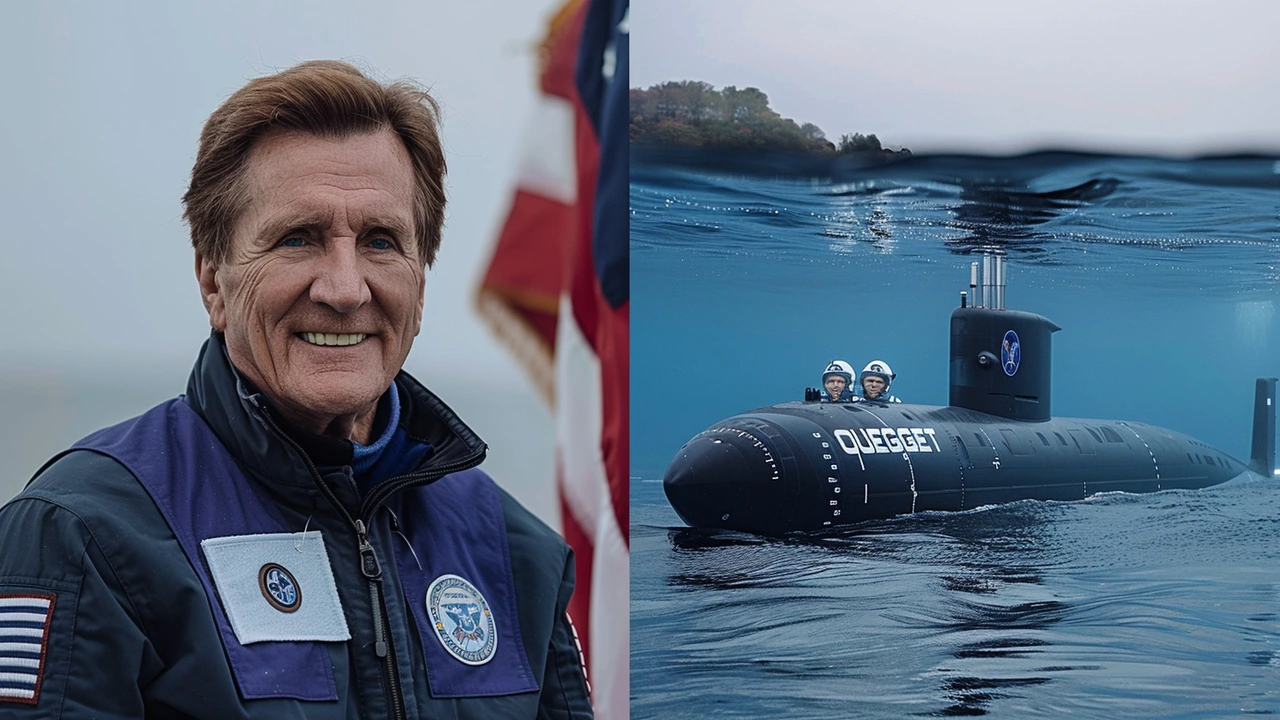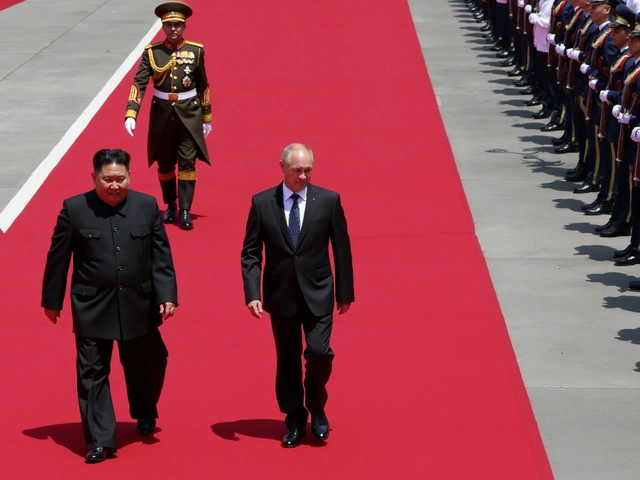The Ambitious Dive into History
A year following the catastrophic OceanGate Titan submersible incident, which resulted in the loss of five lives, an audacious and ambitious plan has emerged from the depths of the ocean's darkness. Ohio-based billionaire Larry Connor is at the heart of this endeavor, joining forces with Patrick Lahey, co-founder of Triton Submarines, to conduct a mission to the Titanic shipwreck. It's not just any mission; it's a $20 million endeavor, a testament to Connor's belief in pushing boundaries and exploring the mysterious realm beneath our oceans.
Connor, a renowned real estate developer with a penchant for high-risk, high-reward ventures, isn't a stranger to exploration. The name Titanic evokes a sense of both awe and caution due to its historical significance and the recent tragedies associated with its exploration. Connor's mission aims to transcend the narrative of disaster and shine a spotlight on the boundless opportunities the ocean offers for scientific advancement, historical exploration, and personal transformation.
The Titan Submersible Tragedy
Last June, the world watched in horror as the OceanGate Titan submersible met with a tragic end during its expedition to the Titanic wreck, located at a staggering depth of over 12,400 feet in the North Atlantic Ocean. The disaster took the lives of five individuals, including Stockton Rush, the CEO of OceanGate. The incident left a mark on the community of ocean explorers and raised questions about the safety and ethics of deep-ocean expeditions.
Among the voices questioning OceanGate's approach was Patrick Lahey, who criticized the company's methods as 'quite predatory' and openly questioned their safety certifications. The aftermath of the incident underscored the dire need for advancements in technological safety and prompted a call for a more responsible approach to underwater exploration.

The Genesis of a New Mission
In the wake of the OceanGate disaster, Larry Connor urged Patrick Lahey to develop a superior submersible, capable of conducting deep-sea voyages with the utmost emphasis on safety and reliability. The result of their collaborative vision is the Triton 4000/2 Abyssal Explorer, a two-person submersible designed to withstand the pressures of the deep ocean. This vessel, valued at $20 million, is a marvel of modern engineering, representing a confluence of advanced materials, cutting-edge technology, and meticulous design.
The Triton 4000/2 Abyssal Explorer is not just an ordinary vessel; it signifies a commitment to safe and repeatable deep-ocean exploration. Its capabilities are grounded on solid engineering principles and comprehensive safety protocols, addressing the shortcomings and criticisms that plagued earlier models.
Designed for Depths
One of the most impressive aspects of the Triton 4000/2 Abyssal Explorer is its design. The submersible boasts a pressure hull that can endure the immense pressures at the Titanic’s depth of 12,400 feet. The innovative use of new materials and advanced construction techniques ensures that the vessel can perform multiple voyages, allowing for extensive exploration and data collection.
The submersible’s emphasis on safety extends to every aspect of its operation. From the state-of-the-art navigation systems to the reinforced structural elements, no detail has been overlooked. This new design marks a significant step forward from previous models, embodying a more cautious and enlightened approach to deep-sea exploration.
The Mission’s Objectives
Larry Connor’s expedition transcends mere exploration; it’s an effort to bring a fresh perspective on the Titanic, to uncover more of its hidden stories, and to conduct meaningful scientific research. The project aims to delve into the ship’s remains with the hope of discovering new information and artifacts that can shed light on the storied vessel’s final moments.
Furthermore, the mission serves as a testament to human ingenuity and resilience. By navigating the depths successfully, Connor and Lahey plan to demonstrate that with the right technology and approach, the ocean need not be a perilous frontier but a realm of vast potential and wonder. It’s a vision that combines a reverence for history with a bold outlook toward the future.
A Symbolic Endeavor
This expedition is also symbolic, representing a shift in how humanity interacts with the deep ocean. By prioritizing safety, sustainability, and scientific enrichment, Connor and Lahey aim to set a new benchmark for future underwater missions.
In the broader context, the mission is reflective of a cultural moment where humanity seeks to reconnect with nature in thoughtful and responsible ways. As climate change and environmental concerns dominate global discourse, the expedition highlights the role of responsible exploration in fostering a deeper understanding of our planet.

Technological Marvel: Triton 4000/2 Abyssal Explorer
Delving deeper into the technology, the Triton 4000/2 Abyssal Explorer is equipped with a range of sophisticated tools. The submersible features high-definition cameras capable of capturing detailed images and videos of the wreckage. These visual records are essential for both public education and the accurate documentation of the Titanic’s current state.
In addition, the submersible is outfitted with robotic arms that can delicately handle artifacts and conduct in-situ examinations without disturbing the site. This meticulous approach to data collection underscores the mission's commitment to preserving the historical integrity of the Titanic site.
The Human Element
At the core of this mission lies the human element. Larry Connor and Patrick Lahey’s collaboration brings together two individuals driven by a shared passion for ocean exploration. Their dedication to pushing the boundaries of what’s possible while adhering to the highest standards of safety and ethics sets a new precedent in the field.
Connor's unwavering commitment to the mission, coupled with Lahey's technical expertise, creates a synergistic partnership. It is this blend of visionary ambition and practical know-how that positions the expedition for success, offering a narrative of triumph and progress in the face of adversity.
A New Dawn for Deep-Sea Exploration
Larry Connor’s planned $20 million mission to the Titanic wreck is poised to redefine the landscape of deep-sea exploration. With the advanced Triton 4000/2 Abyssal Explorer and a steadfast commitment to safety, the expedition is not merely about visiting a historical site but epitomizes the spirit of discovery.
As preparations continue and the mission takes shape, it captures the imagination of those fascinated by the ocean's mysteries. The journey promises to deliver not only scientific insights and historical revelations but also a renewed sense of what's possible when humanity approaches nature with respect and curiosity.
In the shadows of the OceanGate tragedy, this new mission stands as a beacon of hope and human ingenuity. It’s a reminder that even in the wake of disaster, progress and innovation can pave the way to new frontiers, turning the depths of the ocean into realms of uncharted possibilities.








Sonia Singh
May 29, 2024 AT 00:57Wow, this sounds like an exciting adventure! I hope they keep safety front and centre.
Ashutosh Bilange
May 29, 2024 AT 04:17Honestly, this is the kinda thing that makes me jump out of my seat – a billionaire dabbling in deep‑sea drama! They say it’s "definately" safer than the Titan, but who knows? The tech is sooo brill, yet I can’t help but feel it’s a glossy PR stunt. Still, I’m thrilled to see the submersible look like a sci‑fi movie prop.
Kaushal Skngh
May 29, 2024 AT 06:30Looks like another billionaire vanity project to me.
Rahul Chavhan
May 29, 2024 AT 10:40Pretty neat idea, huh? I wonder how they plan to keep the crew safe down there. The pressure at 12,400 feet is insane. Hope the new sub has solid backup systems.
HarDeep Randhawa
May 29, 2024 AT 12:37Well, Ashutosh, you sound super excited!!! But let’s not forget the risks – the ocean is unforgiving!!! The “safety” claims are great, but real‑world testing matters!!!!
Nivedita Shukla
May 29, 2024 AT 18:10The ocean’s abyss has always been a mirror to humanity’s own depths, reflecting both our relentless curiosity and our hubristic stride forward. In the wake of tragedy, the call to explore becomes a chorus of voices urging caution yet yearning for revelation. The Triton 4000/2 emerges not merely as metal and glass, but as a testament to collective learning from past failures. Its hull, forged from advanced composites, promises resilience against crushing pressures that once spelled doom for the Titan. Yet resilience is not solely a matter of engineering; it is woven from rigorous testing, redundant systems, and an ethos of responsibility. The marriage of Patrick Lahey’s technical mastery with Larry Connor’s bold financing creates a synergy that may finally balance audacity with prudence. As the sub descends, cameras will capture light that has not grazed the wreck for a century, unveiling rusted relics and silent stories. Robotic arms, delicately calibrated, will retrieve artifacts without disturbing the grave of a ship that once symbolized hope and loss. This mission, if successful, may rewrite our understanding of early 20th‑century maritime construction. Moreover, the data gathered on deep‑sea ecosystems could illuminate how life persists under darkness, informing climate science. We must also acknowledge the ethical dimension; the Titanic’s resting place is a memorial, not a theme park. Respectful documentation supersedes treasure hunting. In this delicate dance between curiosity and reverence, the expedition sets a precedent for future deep‑sea endeavors. If safety protocols hold, the world may witness a new era where the ocean’s secrets are unlocked responsibly. The narrative, therefore, shifts from tragedy to triumph, from fear to informed wonder. Ultimately, the voyage is a reminder that humanity’s greatest achievements stem from the humility to learn from past missteps while daring to dream beyond the horizon.
Harshit Gupta
May 29, 2024 AT 20:40Listen, Nivedita, all that poetic fluff won’t stop a hull breach. If they can’t prove redundancy in real‑world drills, it’s just another fancy toy. The ocean doesn’t care about your metaphors.
Joseph Prakash
May 29, 2024 AT 22:20Cool project 🚀 Let's hope they get some epic footage! 🤞
Arun 3D Creators
May 29, 2024 AT 23:43the abyss is a silent teacher, each dive a lesson in humility
RAVINDRA HARBALA
May 30, 2024 AT 02:47The engineering specs will be the real litmus test here. If the sub can sustain multiple dives without degradation, it sets a new benchmark. Otherwise, we’ll see another cautionary tale. Data transparency will be crucial for the community.
Vipul Kumar
May 30, 2024 AT 05:00Great points, Ravindra. It would be helpful if the team publishes detailed test results and pressure‑cycle logs. That way, enthusiasts and professionals alike can evaluate the design’s robustness.
Priyanka Ambardar
May 30, 2024 AT 08:37Honestly, it’s high time we stop glorifying disasters and start supporting legit research. 🎯 This could finally give the Titanic's story the respect it deserves.
sujaya selalu jaya
May 30, 2024 AT 10:33Your enthusiasm is noted. Let us hope the expedition proceeds with due caution.
Ranveer Tyagi
May 30, 2024 AT 14:43The Triton design includes triple‑redundant power, autonomous emergency ascent, and real‑time hull stress monitoring!!! This level of safety is unprecedented!!! I’d recommend following the live telemetry feed if you want to stay updated!!!